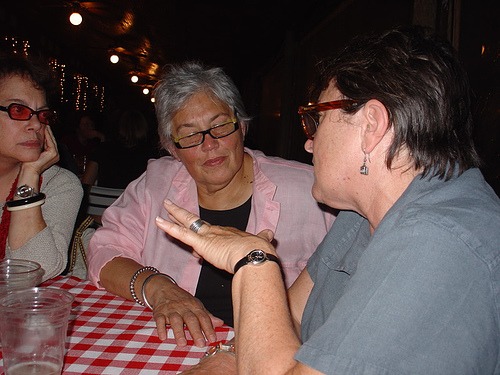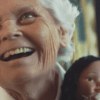
Company/Organization Profiles | Local Industry
The Frontier is Collaborative
Written by Susi Walsh | Posted by: Anonymous
Susi Walsh reports from the field of NAMAC, and the unique toolings of Austin’s indie scene.
This month, NewEnglandFilm.com invited Center for Independent Documentary’s executive director Susi Walsh to contribute a report from the field at NAMAC. Read it below or check out her blog.
NAMAC (the National Alliance for Media Arts and Culture) held its biannual conference in Austin, TX October 17-20, 2007. The title of this year’s conference was The Frontier is Here, and it promised to take us on an exploration of the themes of creativity and innovation through four days of speakers, panels and Austin excursions.
I’d never been to Texas before, and I’ve since learned while I was in Austin that it isn’t much like the rest of Texas. It’s a fast growing city which wears its old sections well, and seems to be proud of its much more liberal reputation than the rest of the state. We were staying at the Sheraton hotel downtown, within a quick walk to the beautiful state capitol building and what seemed to be an unlimited number of bars (many of them outdoors) featuring live music of all kinds.
Like past NAMAC conferences, the character of the host city plays a part in both the feel and the content of the conference. I’d heard a lot about the Austin film community over the years, and was especially interested in the lessons to be learned about the Austin Studios (an airplane hangar that they’ve creatively turned into a production studio) and the Texas Filmmakers Production Fund (which filmmakers started themselves when they couldn’t find funding anywhere else). I wondered how we might be able to implement some of those ideas back here in New England.
NAMAC co-director Helen De Michiel set the tone for the conference with her welcoming remarks. She challenged us to think about the ethical use of new technologies in our work and about how to take action, collaborate and build our communities with concern for the common good. An old theme to be sure, but one that needs deeper consideration as we move into a media landscape that favors increasingly more solitary media. “Do it with others,” she said, “connect, communicate, collaborate.”
Richard Linklater (Fast Food Nation, Before Sunset, School of Rock) gave the opening keynote — it was more of a conversation really — and talked about the history of the Austin Film Society and its relationship to his own work. He started the film society in the 1960’s because he just wanted other people to watch films with. And over the years, they’ve grown to making films together as well as funding them — did it with others.
As we sat at lunch, chewing over the morning’s sessions, we wondered, what role does a physical community play in a world of online distribution? What does localization look like in cyberspace? And are social networks our new communities? I met a woman from San Francisco who belongs to NOSO, a new anti-social networking site online (where you meet no friends and make no connections) where you “disconnect” from all technology, but you do it with others.
I was really seeing this theme start to emerge as I made my way through the panels. And then it happened. My friend Caroline said she wanted to go down to look at a store she’d found online that sold cowboy boots. We decided to walk as we were told it wasn’t far (they were wrong) — but along the way we saw a lot of the city, we met some really nice folks, and ultimately found some really great boots. I’d actually never experienced anything like the boot store — who knew there were so many colors? Styles? And that they were actually comfortable? Still, the first trip there I didn’t buy them. But I appreciated how they made Caroline feel when she put them on, and once we left I regretted that I was still marching in my plain old shoes.
Back at the conference, things were heating up in the panel discussion about the market for online distribution and exhibition. Are the same big gatekeepers succeeding in dominating the market? Is this “Meet the New Boss, Same As the Old Boss” the same old story with a new technology? Some think not. Some think the new boss is the consumer. (Check out the Worcester-based Participatory Culture Foundation and their free open source video platform Miro). I’m not so sure, and I still haven’t heard anyone say how producers are actually really going to make money, but then, I’m also distracted by boots.
Gary Chapman, project director of the 21st Century Project, gives the keynote speech on Saturday morning. His talk asks us to consider once again the core values of the media arts field. He talks about the Slow Food Movement, and Cittaslow, which according to their website is a way of thinking: “It is about caring for your town and the people who live and work in it or visit it. It is about protecting the environment, about promoting local goods and produce, and about avoiding the ‘sameness’ that afflicts too many towns in the modern world.” One example he gives of a participatory local network is outside.in, which truly makes blogging local, and uses technology to highlight what is special and unique about individual neighborhoods.
Local goods that are unique are now really on my mind. Caroline has checked out another boot store that we heard about while we were on our long walk through town. These boots are truly spectacular. Handmade. And on major sale. She’s gone down to buy a pair for her daughter, and when she comes back with them we are all dazzled. With my mind partly on a discussion of the transition to digital TV in 2009, I finally get that conference AHA! moment. For me, it’s all about the boots.
Three of us head down to the boot store as I hear that mantra in my head, do it with others. I am also thinking of NAMAC consultant Paula Manley’s comment in the last workshop I’d attended, that in running our organizations we should start to “focus on the things we do well” and that “positive images of the future build anticipation and momentum for change.” I’ve got the image in my head of me in those cowboy boots, and when I finally get some on, I am indeed standing taller and straighter and feeling pretty frisky. Back at the hotel, we all admire each other in our new boots, and we know we’ve shared a real local, unique Austin experience.
As I look out the plane window on the way home, and see the blue of the ocean sparkle below, I think about how much I love my own city. About what makes it special. I think about our unique strengths as a community, and the stories we have to tell. And I realize I also have the answer to how Austin secured their studio and production funding. Do it with others.
For information on how you can participate in doing it with others locally check out: The Alliance for Independent Motion Media (AIMM); The Massachusetts Production Coalition (MPC); The Filmmakers Workshop Network; or of course, the many resources offered by NewEnglandFilm.com.
For information on how you can participate in doing it with others locally check out: The Alliance for Independent Motion Media (AIMM); The Massachusetts Production Coalition (MPC); The Filmmakers Workshop Network; or of course, the many resources offered by NewEnglandFilm.com.









